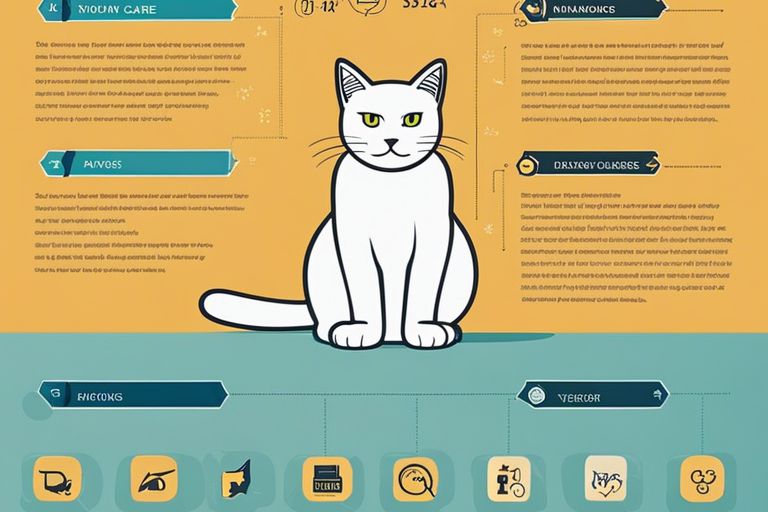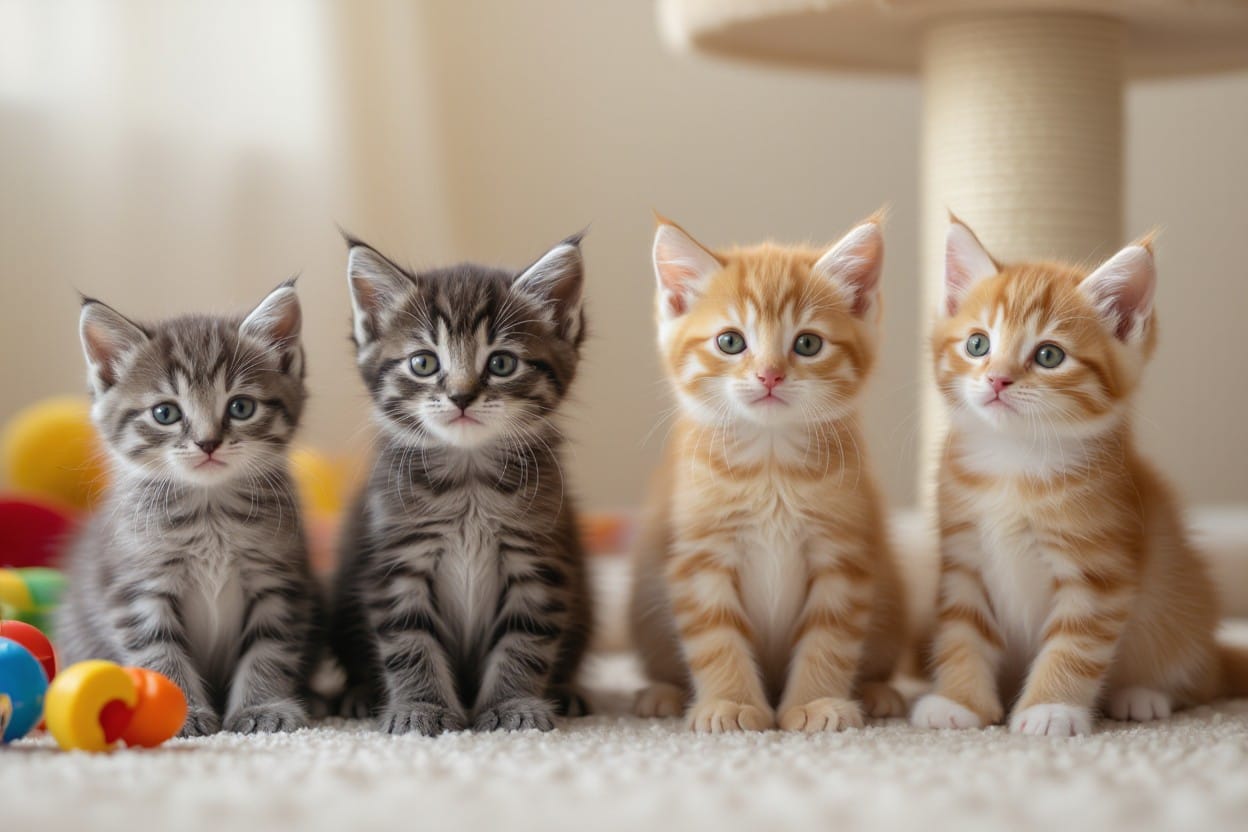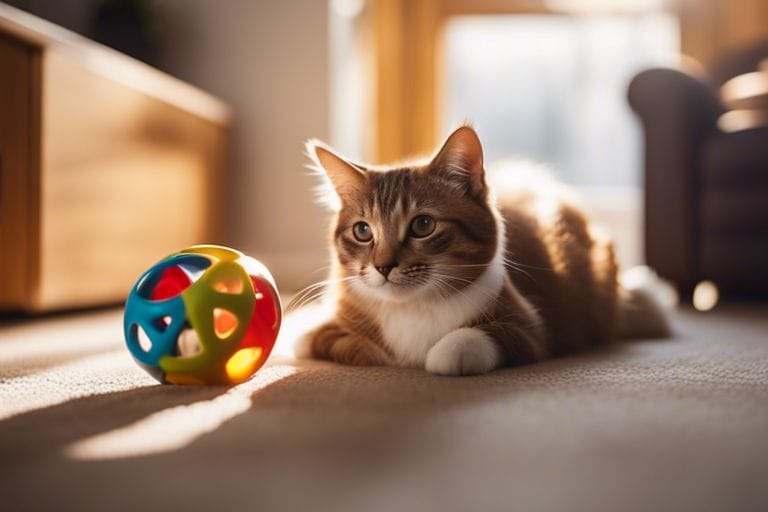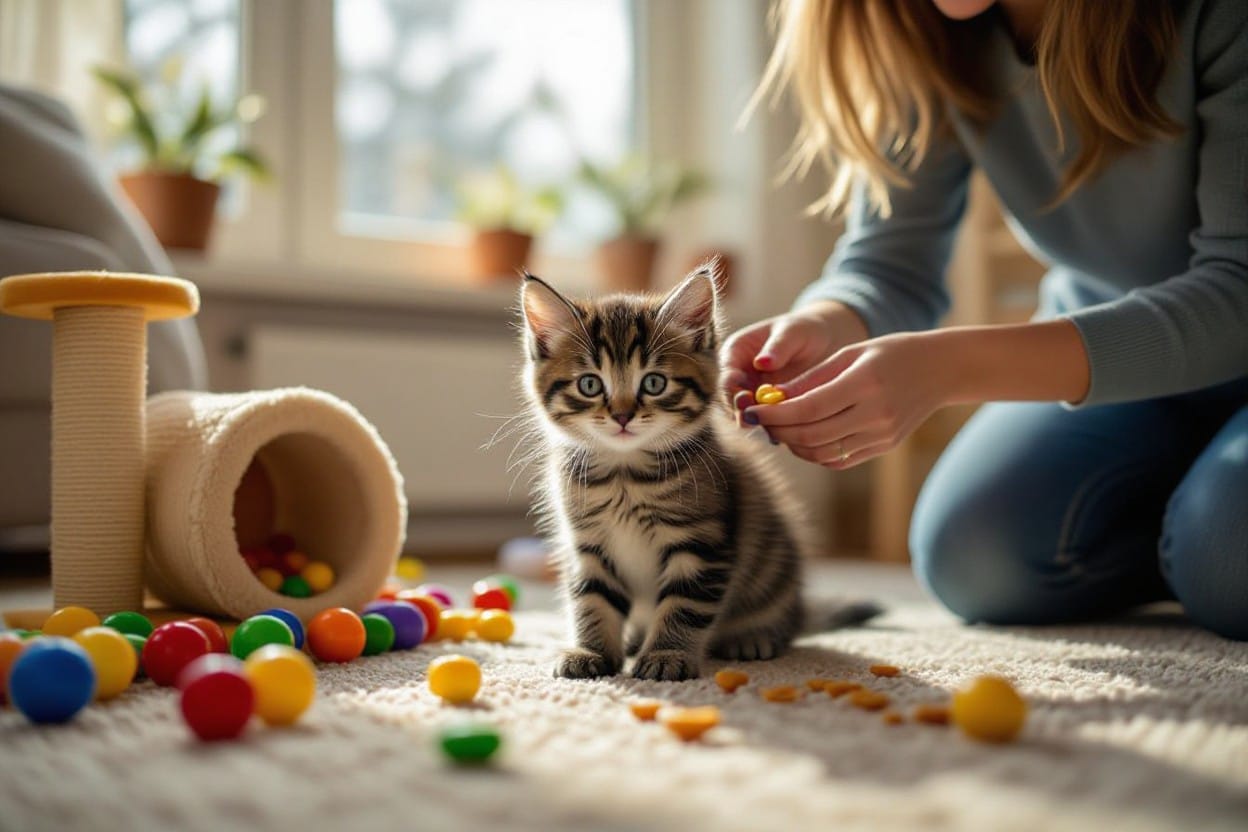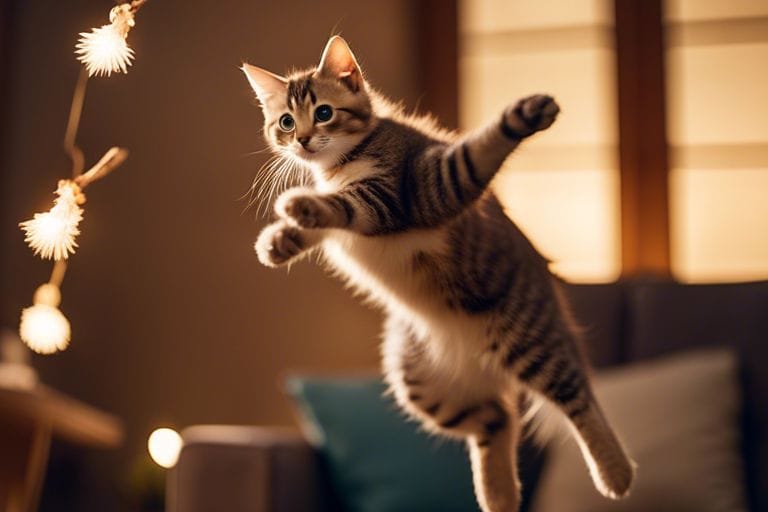It’s crucial for cat owners to have a solid understanding of feline behavior in order to provide the best care for their fur babies. Cats have unique personalities and behaviors that can sometimes be puzzling to their human companions. By learning to interpret and respond to these behaviors, owners can strengthen their bond with their feline friends and ensure their well-being.
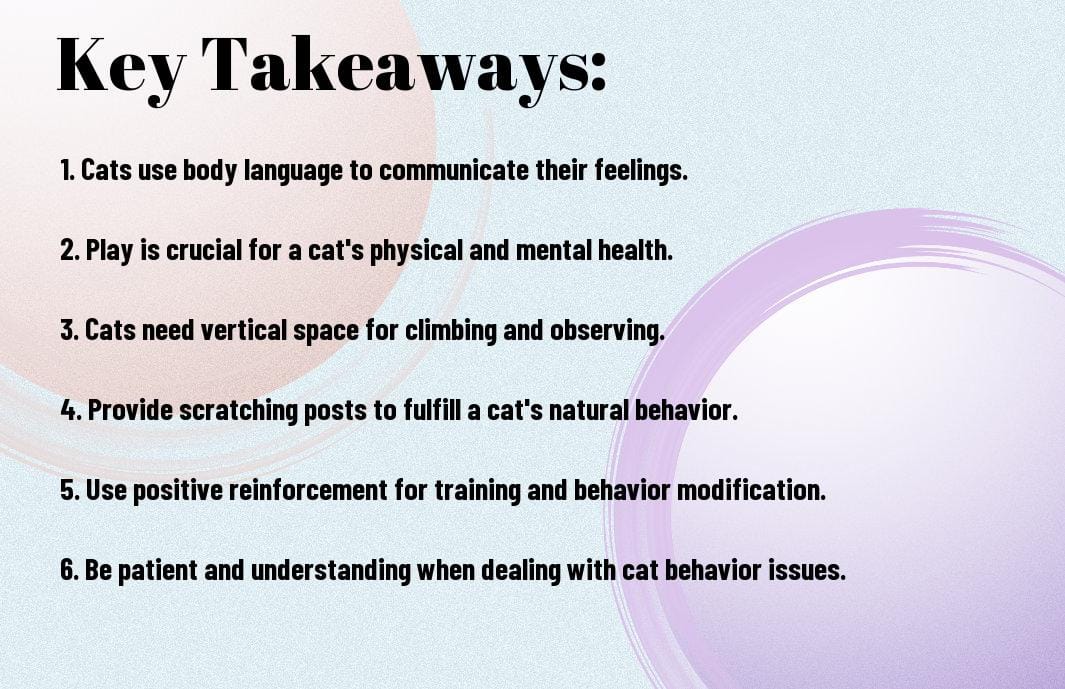
The Essentials of Feline Communication
Deciphering Vocal Signals
Feline vocal signals are a crucial aspect of their communication with humans and other animals. Cats have an extensive repertoire of sounds that they use to express their emotions and needs. From the familiar meow to the demanding and insistent yowl, each vocalization has a specific purpose. By paying attention to the pitch, volume, and duration of a cat’s meows, owners can start to understand what their feline companion is trying to convey.
Body Language and What It Tells You
Feline body language is rich and nuanced, often providing subtle cues about a cat’s mood and intentions. The position of a cat’s ears, eyes, tail, and whiskers can offer valuable insights into their emotional state. For instance, a cat with flattened ears and dilated pupils may be showing signs of fear or aggression, while a cat with a relaxed posture and slow blinking eyes is likely feeling content and at ease.

The Social Structure of Cats
Now let’s explore into the intricate social structure of our feline companions. Cats are known for their independent nature, but they also thrive within a social hierarchy, especially in multi-cat households. Understanding how cats establish and maintain their social order can help pet owners create a harmonious environment for their fur babies.
Understanding Hierarchies in Multi-Cat Households
The social structure in multi-cat households is often based on a hierarchy where each cat has a rank within the group. This hierarchy is typically established through various behaviors such as posturing, vocalizations, and physical interactions. Cats may display dominance or submission towards one another to maintain peace and order within the group.
Social Interactions with Humans and Other Pets
The relationship between cats and their human or animal counterparts is an important aspect of their social behavior. Cats are known to form strong bonds with their owners, often displaying affection through purring, kneading, and rubbing against them. With other pets in the household, cats may engage in social play, grooming, or even establish their own hierarchy within the group.
Understanding the dynamics of social interactions between cats, humans, and other pets can help pet owners nurture positive relationships and create a loving and supportive environment for their furry companions.
Reading the Signs: Common Cat Behaviors Explained
Tail Twitches and Ear Movements
Keep an eye on your cat’s tail and ears to decipher important signals they might be sending. A twitching tail could indicate agitation or excitement, while a tucked tail may signal fear or submission. Ears that are upright and forward show interest, while flattened ears indicate irritation or aggression. By understanding these subtle cues, you can better respond to your cat’s needs and emotions.
Kneading, Purring, and Other Affectionate Behaviors
On occasion, your cat may display affection through behaviors like purring, kneading, and gentle headbutts. These actions are often a sign that your cat is feeling content and comfortable in your presence. Purring can also indicate relaxation or a way for cats to self-soothe. Kneading, where a cat rhythmically pushes their paws against a soft surface, is a behavior carried over from kittenhood when they kneaded their mother’s belly to stimulate milk flow.
A cat’s purring can serve various purposes, including communicating with their owners, self-soothing, or even promoting healing as the frequency of a cat’s purr is believed to have therapeutic effects on their bodies. It’s a unique way for cats to convey their feelings and foster positive interactions with their human companions.
Marking Territory: Scratching and Spraying
Spraying is a common behavior in intact male cats, but spaying or neutering can greatly reduce this behavior. It involves the cat marking its territory by spraying a small amount of urine on vertical surfaces. If your cat is spraying, it’s important to address the underlying cause, which could be stress, changes in the environment, or the presence of other animals.
The act of scratching is a natural behavior for cats, serving to mark their territory, remove the dead outer layer of their claws, and stretch their bodies. Providing appropriate scratching posts and regularly trimming your cat’s nails can help redirect this behavior and protect your furniture from damage.
Addressing Behavioral Issues
Aggression and Its Underlying Causes
Noticing aggression in your feline companion can be concerning. There can be various underlying causes for this behavior, including fear, stress, territoriality, or medical issues. One common reason for aggression in cats is redirected aggression, where a cat may become aggressive towards another pet or human after encountering a stressor, such as seeing another cat through a window.
Litter Box Problems: Causes and Solutions
Behavioral issues related to the litter box are a common concern for cat owners. One of the main reasons for litter box problems is a dirty or unappealing litter box. Cats are clean animals by nature, and if the litter box is not kept clean, they may refuse to use it. Medical issues, stress, and changes in their environment can also cause litter box problems.
It is vital to address litter box problems promptly to prevent them from becoming a long-term issue. If your cat is avoiding the litter box, consult with your veterinarian to rule out any underlying medical conditions. Once medical issues are ruled out, evaluate the litter box location, type of litter used, and cleanliness to ensure they meet your cat’s preferences.
Excessive Vocalization and How to Deal With It
It can be challenging to deal with a cat that excessively vocalizes, especially at night. Excessive vocalization can be a sign of various issues, such as stress, loneliness, or even a medical problem. Understanding the underlying cause of your cat’s vocalization is crucial in addressing this behavior.
Underlying
To address excessive vocalization, it is vital to identify the triggers for your cat’s behavior. Keep a journal to track when the vocalization occurs and any potential stressors in their environment. Providing environmental enrichment, such as interactive toys, scratching posts, and playtime, can help alleviate boredom and reduce excessive vocalization.
To effectively deal with excessive vocalization, it is vital to remain patient and consistent in your approach. Avoid reinforcing the behavior by giving in to your cat’s demands or yelling at them. By understanding the underlying cause and implementing appropriate strategies, you can help your cat manage their vocalization effectively.
Nutrition and Its Impact on Behavior
Diet and Its Role in Behavioral Health
Many feline owners may not realize the significant impact that nutrition plays in their cat’s behavior. The food your cat consumes directly affects their physical health and can also influence their mental and emotional well-being. A well-balanced diet tailored to meet your cat’s nutritional needs is imperative for promoting good behavior and overall wellness.
Understanding and Managing Food-related Aggression
Health. Food-related aggression in cats can manifest in various ways, such as hissing, growling, or even attacking other pets or humans during meal times. It is crucial for cat owners to recognize the signs of food-related aggression and take steps to manage this behavior effectively.
Role. For instance, feeding your cat in a separate, quiet location away from other pets can help reduce the chances of food-related aggression. Additionally, providing each cat with their own food bowl and ensuring they have enough space to eat without feeling threatened can also help minimize conflicts during meals.
Enrichment: Keeping Your Cat Mentally Stimulated
The Importance of Play and Physical Activity
Your cat’s mental and physical well-being greatly depends on play and physical activity. Cats are natural hunters and need stimulation to prevent boredom and behavioral issues. Play sessions and activities not only provide exercise but also engage their minds, keeping them sharp and content.
Interactive Toys and Creating an Engaging Environment
Environment plays a crucial role in your cat’s overall well-being. Interactive toys, such as puzzle feeders, feather wands, and laser pointers, can keep your cat entertained and mentally stimulated. Creating an engaging environment with cat trees, scratching posts, and hiding spots can provide opportunities for exploration and play, mimicking their natural instincts.
Offer a variety of toys and rotate them regularly to prevent boredom. Encourage your cat’s hunting instincts by hiding treats around the house or using toys that require them to “hunt” for their food. This not only keeps them mentally engaged but also provides physical exercise.
Training Your Cat: Basic Commands and Tricks
Training your cat basic commands and tricks can be a fun and rewarding experience for both you and your feline companion. Contrary to popular belief, cats are trainable and can learn to sit, stay, come, and even do fun tricks like high five or roll over. Training sessions provide mental stimulation and strengthen the bond between you and your cat.
To successfully train your cat, use positive reinforcement techniques such as treats, praise, and patience. Keep training sessions short and fun, ending on a positive note to keep your cat interested and eager to learn. Consistency is key, so practice regularly and be patient with your furry friend as they learn and progress.
Health Concerns and Behavioral Changes
Recognizing the Signs of Illness through Behavior
For feline owners, being attuned to your cat’s behavior can provide important clues about their health. Changes in behavior can often be an early indicator of an underlying health issue. Look out for signs such as sudden aggression, excessive meowing, hiding, changes in litter box habits, loss of appetite, or lethargy. These unusual behaviors should prompt a visit to the veterinarian for a thorough examination.
Addressing Age-related Behavioral Issues in Senior Cats
Signs of aging in senior cats can manifest through changes in behavior. As cats grow older, they may experience cognitive dysfunction, leading to disorientation, increased vocalization, changes in sleep patterns, or decreased social interaction. Providing a comfortable and familiar environment, along with regular veterinary check-ups, can help in managing these age-related behavioral changes and ensuring your senior feline’s well-being.
Through understanding and proactive engagement, owners can offer the necessary support to senior cats experiencing behavioral changes. By creating a peaceful and comfortable space, maintaining a routine, and seeking guidance from a veterinarian, owners can help their aging feline companions navigate this phase of life with grace and comfort.

Building a Strong Bond With Your Cat
Respect and Trust: The Cornerstones of Your Relationship
Building a strong bond with your cat starts with respect and trust. Cats are independent creatures that value their personal space and autonomy. It’s crucial to approach your cat with respect for their boundaries and preferences. By creating a space where your cat feels safe and secure, you are laying the foundation for a trusting relationship.
Trust is earned over time by being consistent in your interactions with your cat. Respect their signals; if they show signs of discomfort or aggression, give them space. By allowing your cat to come to you on their terms, you are showing that you value their feelings and are building trust in the relationship.
Effective Communication and Understanding Your Cat’s Needs
Cats communicate in their unique ways, such as body language, vocalizations, and behaviors. Understanding these cues is vital for effective communication with your cat. Pay attention to their body language – dilated pupils, twitching tail, and purring can convey different messages. By familiarizing yourself with these signals, you can better understand your cat’s needs and moods.
Building a strong bond with your cat involves more than just meeting their physical needs. Cats thrive on mental stimulation and play. Engage with your cat through interactive toys, puzzle feeders, and designated play times. By providing outlets for their natural instincts, you are strengthening the bond through positive interactions and shared experiences.
Conclusion
From above, we can conclude that understanding feline behavior is necessary for fur baby owners to provide the best care and environment for their cats. By recognizing their body language, vocalizations, and common behaviors, owners can build a stronger bond with their feline companions and address any issues that may arise effectively. It is important to create a safe and stimulating environment, provide proper socialization, and offer mental and physical stimulation to keep cats healthy and happy.
By following the tips outlined in this guide, fur baby owners can better understand their feline friends and create a harmonious household for both cats and humans. Remember that each cat is unique, so patience and observation are key when deciphering their behavior. With the right knowledge and approach, you can ensure a happy and fulfilling life for your beloved feline companion.
FAQ
Q: What are some common feline behaviors that pet owners should understand?
A: Cats have unique behaviors such as hunting, scratching, and rubbing to mark their territory. Understanding these behaviors can help pet owners provide appropriate care and ensure a harmonious relationship with their feline companions.
Q: How can pet owners decode their cat’s body language?
A: Cats communicate through body language cues such as tail position, ear movement, and vocalizations. By observing and understanding these cues, pet owners can better interpret their cat’s feelings and reactions in different situations.
Q: Why do cats groom themselves excessively?
A: Excessive grooming in cats can be a sign of stress, anxiety, or underlying medical conditions. Pet owners should observe their cat’s grooming habits and seek veterinary advice if they notice any changes or concerns.
Q: How can pet owners address aggressive behavior in their cats?
A: Aggressive behavior in cats can be triggered by various factors such as fear, pain, or territorial issues. It is imperative for pet owners to identify the root cause of aggression and seek professional guidance to address and manage this behavior effectively.
Q: What are some tips for creating a cat-friendly environment at home?
A: Pet owners can create a cat-friendly environment by providing stimulation, vertical space, hiding spots, and scratching posts. Enriching your cat’s environment can help prevent behavior issues and promote their overall well-being and happiness.

